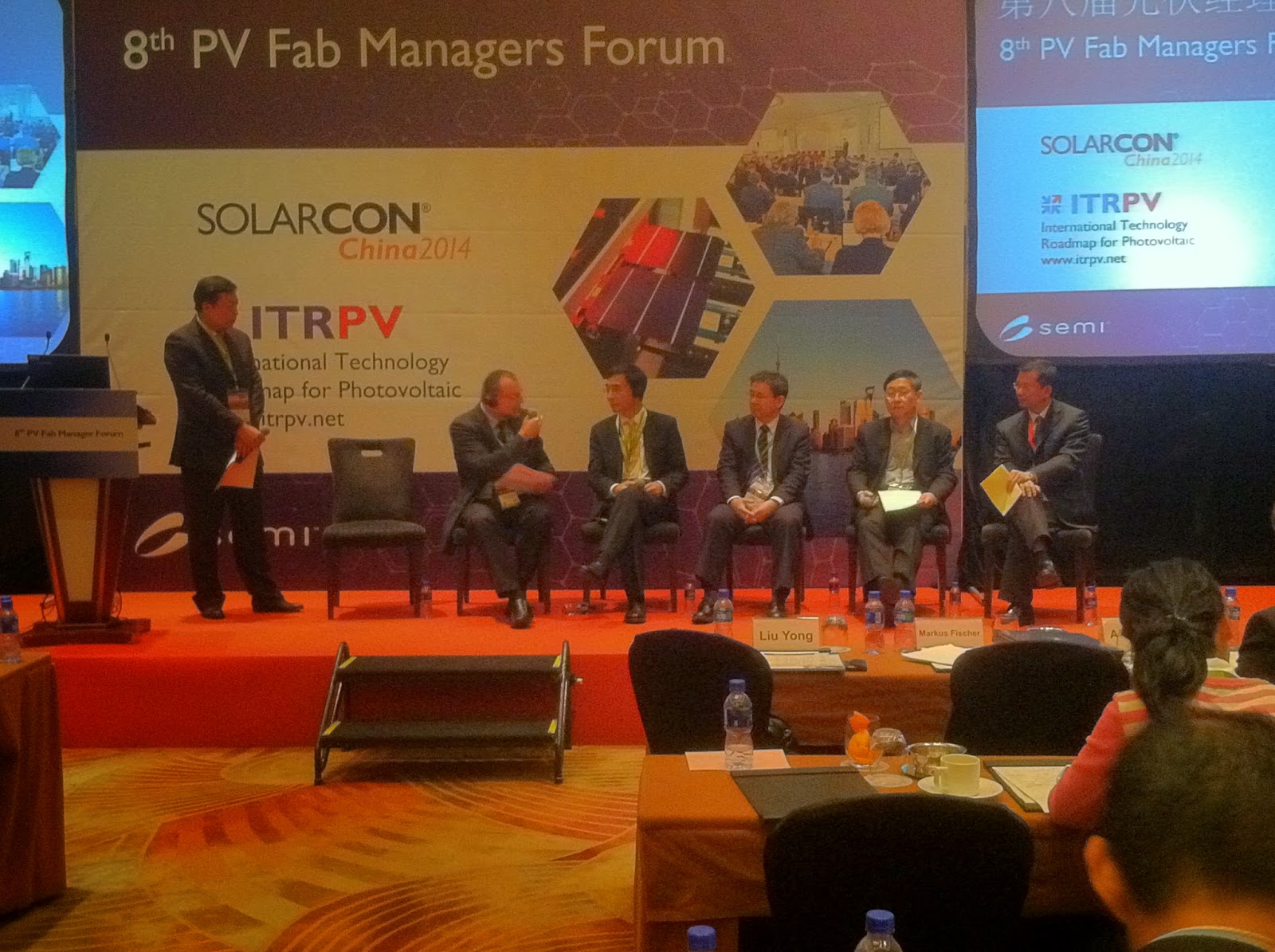SolarCon China 2014 Closes on a High Note
Just a quick post. Last week I covered SolarCon China 2014 in Shanghai for PV Magazine and the article I wrote was posted on the website! It's a small feat since it's just for a conference, but I should be writing another article covering Intersolar China this week in Beijing and will also submit an article based on my research of the distributed PV market in China (which I should start writing). Since this will be a longer article, it may be featured in the printed version of the magazine. That would be cool! Here is a link to the article in PV Magazine. A repost is below.
The three-day Shanghai conference and exhibition showcased a booming domestic PV market and a recovering manufacturing industry while focusing on the country's increasingly significant downstream sector.
The three-day Shanghai conference and exhibition showcased a booming domestic PV market and a recovering manufacturing industry while focusing on the country's increasingly significant downstream sector.
 |
| System development was an important topic at the 8th PV FAB Managers Forum.
Dustin Zubke
|
SolarCon China 2014, which kicked off in Shanghai this week, wrapped up on Thursday following a three-day event that for the first time paid significant attention to the downstream market.
Part of SemiCon China, the conference and exhibition usually focuses on the upstream segment of the PV industry, given China’s dominant role in global PV manufacturing.
However, in 2013, China installed 12 GW of PV, the largest annual capacity addition of any country. This marked a significant pivot from the conventional export driven business model for Chinese PV manufactures. Some Chinese manufacturers are now using more than half of all modules domestically.
The ramp-up in installations was driven by a national feed-in tariff (FIT). The Chinese government attempted to prop up domestic manufacturers as supply-demand imbalances wreaked havoc on the global PV manufacturing industry.
Initially, the FIT did not discriminate between regions or installation sizes, so most of the 12 GW was installed as ground mounted projects in the western and north-western provinces due to the high solar irradiance and low land costs. In September 2013, the central government revised the FIT program by forming three regions of FIT, with a lower value for areas with higher solar insolation. A separate FIT for distributed PV generation was also formed to encourage the development of the distributed PV market.
Grid connection and curtailment have been persistent issues for PV power plants in the western regions. Their electricity competes with wind and coal generation for limit transmission lines to the load centers in the east. With a target of 8 GW of distributed PV in 2014, the government is aggressively supporting the distributed market segment in the hopes of reducing transmission constraints.
The players with the most incentive to take advantage of the FIT are in fact the manufacturers themselves. Not only does building PV power plants provide a source of demand for their modules, but developing systems also provides high margins to supplement their lower production margins. This made system development an important topic during the 8th PV FAB Managers Forum on Tuesday.
Still, staying true to the name, the majority of the forum focused on the most promising methods of reducing production costs and increasing efficiency. The limited resource base of key materials was a consistent topic in both the PV FAB Managers Forum and the China Photovoltaic Technology International Conference (CPTIC), whether the material was silver paste in Si modules, Tellurium in CdTe, or Indium in CIGS modules.
Different crystalline silicon modules were also discussed as presenters weighed the value of mono crystalline silicon (mono-Si) versus high performance multi crystalline silicon (HPmc-Si) modules. HPmc-Si efficiency has been increasing more rapidly than mono-Si efficiency, narrowing the efficiency gap between the two module types. While the higher efficiencies of mono-Si ensure its use in the residential segment where space is limited, the lower cost per watt and increasing efficiency of HPmc-Si cements its position in the large-scale ground mounted and commercial segments. Other key topics at CPTIC and the PV FAB Forum included different cell architecture, especially the passivated emitter and rear cell (PERC) technology.
The International Technology Roadmap of Photovoltaic (ITRPV) predicts that PERC cells will come to dominate over the conventional back surface field (BSF) cell design during the next decade, rising from under 5% of cells today to around 50% in 2024. Hareon Solar believes the PERC cell design is ready for high volume “prime-time” and Hanwha Q-Cells is already employing the technology in Germany.
The 8th PV FAB Manager’s Forum ended with a panel of CTO’s, chief engineers, and managers from top solar manufacturers. In most regards, the panelists were in agreement about the future prospects of PERC cells and the need for greater quality control in downstream projects, but they split on the last topic of vertical integration.
Most Chinese module manufacturers have vertically integrated to include ingot, cell, and module manufacturing. Now, with the expansion of the Chinese domestic PV market, these manufacturers are expanding to include downstream development as well. Some of the panelists spoke of greater economies of scale and diversification of business models as reasons for greater integration, whereas others emphasized the need to focus on core competencies and warning that no single company can do everything well.
The Chinese downstream market is still young and may be suited for large, vertically integrated champions, but only time will tell who on the panel will be proven right.
PV Magazine Link
